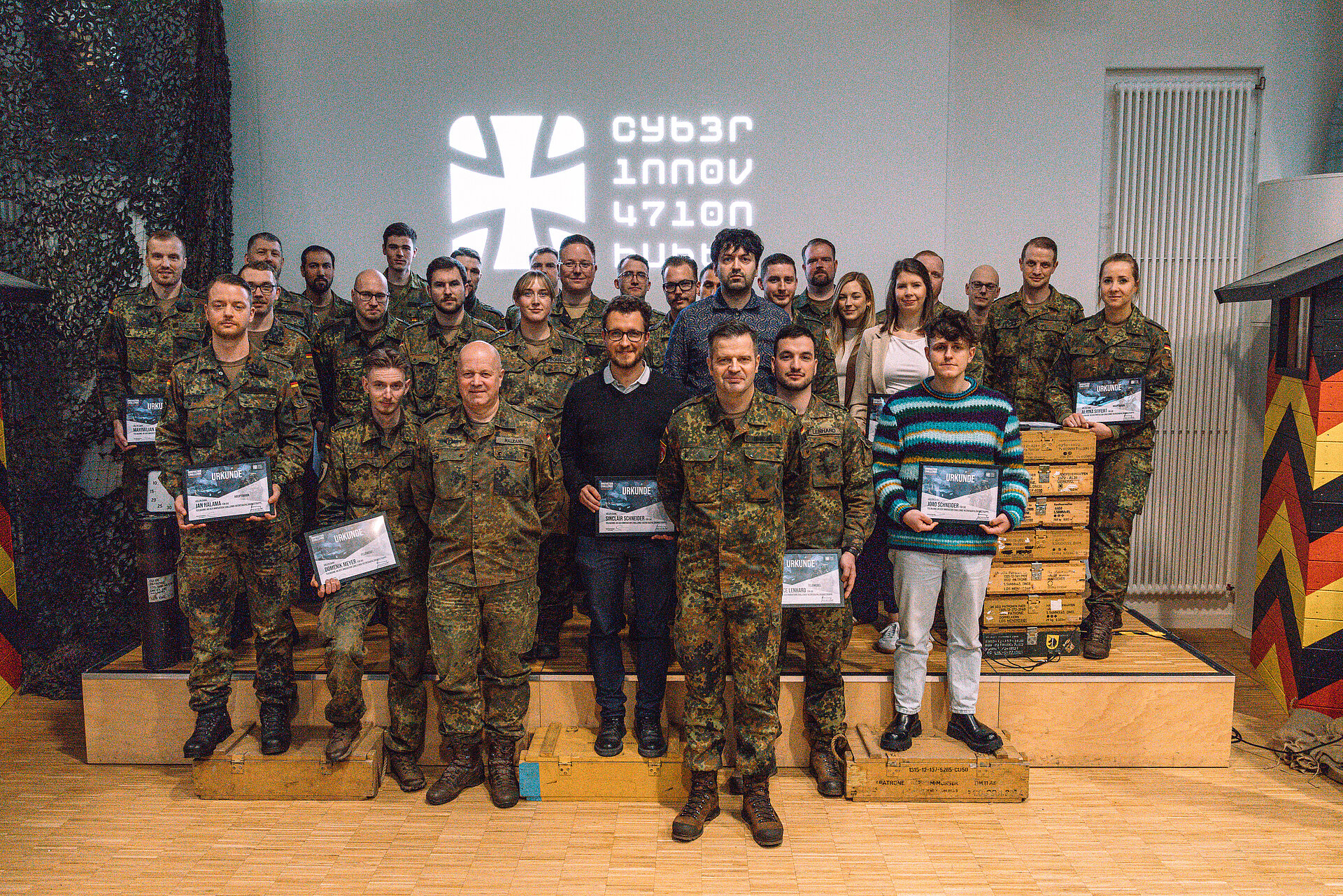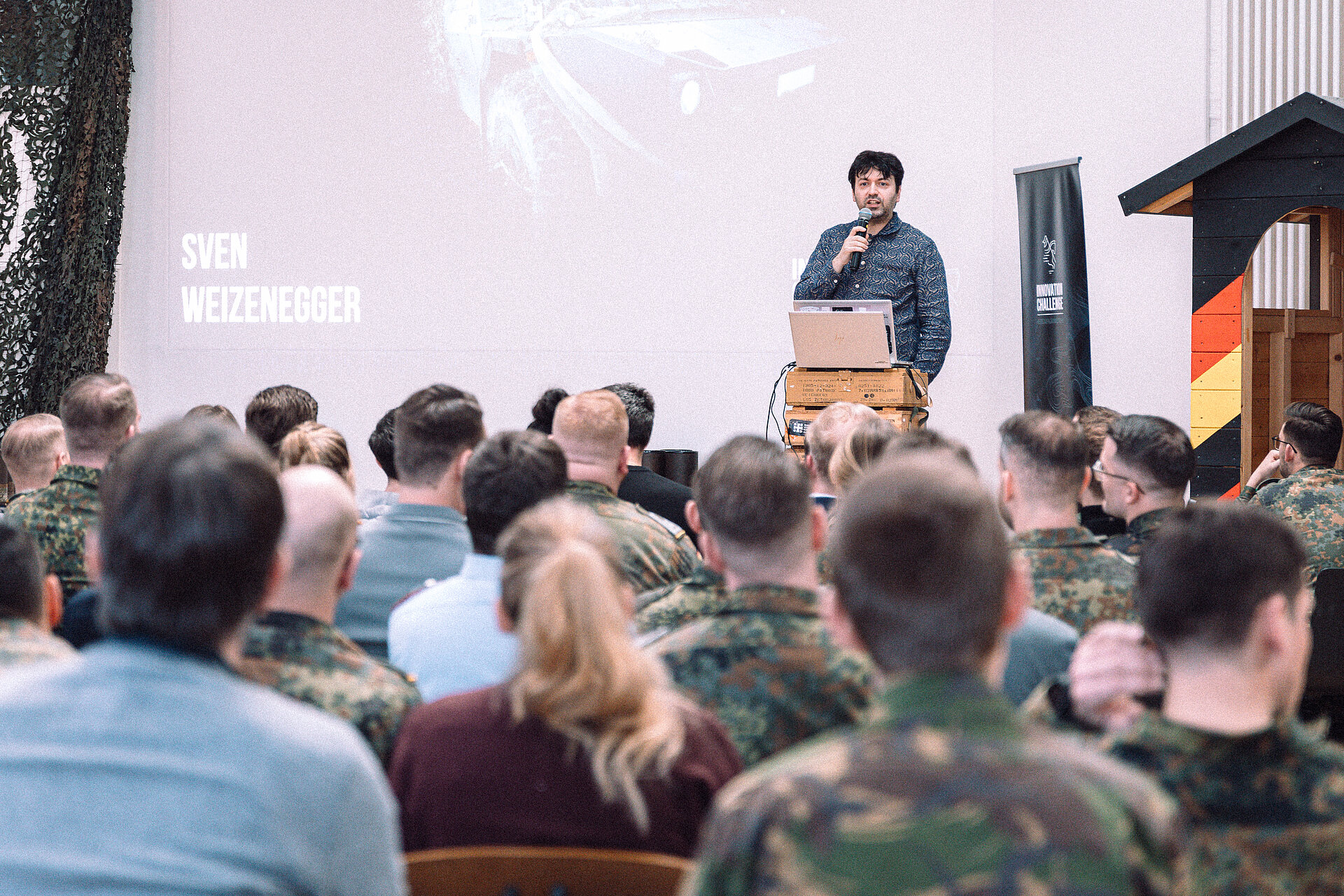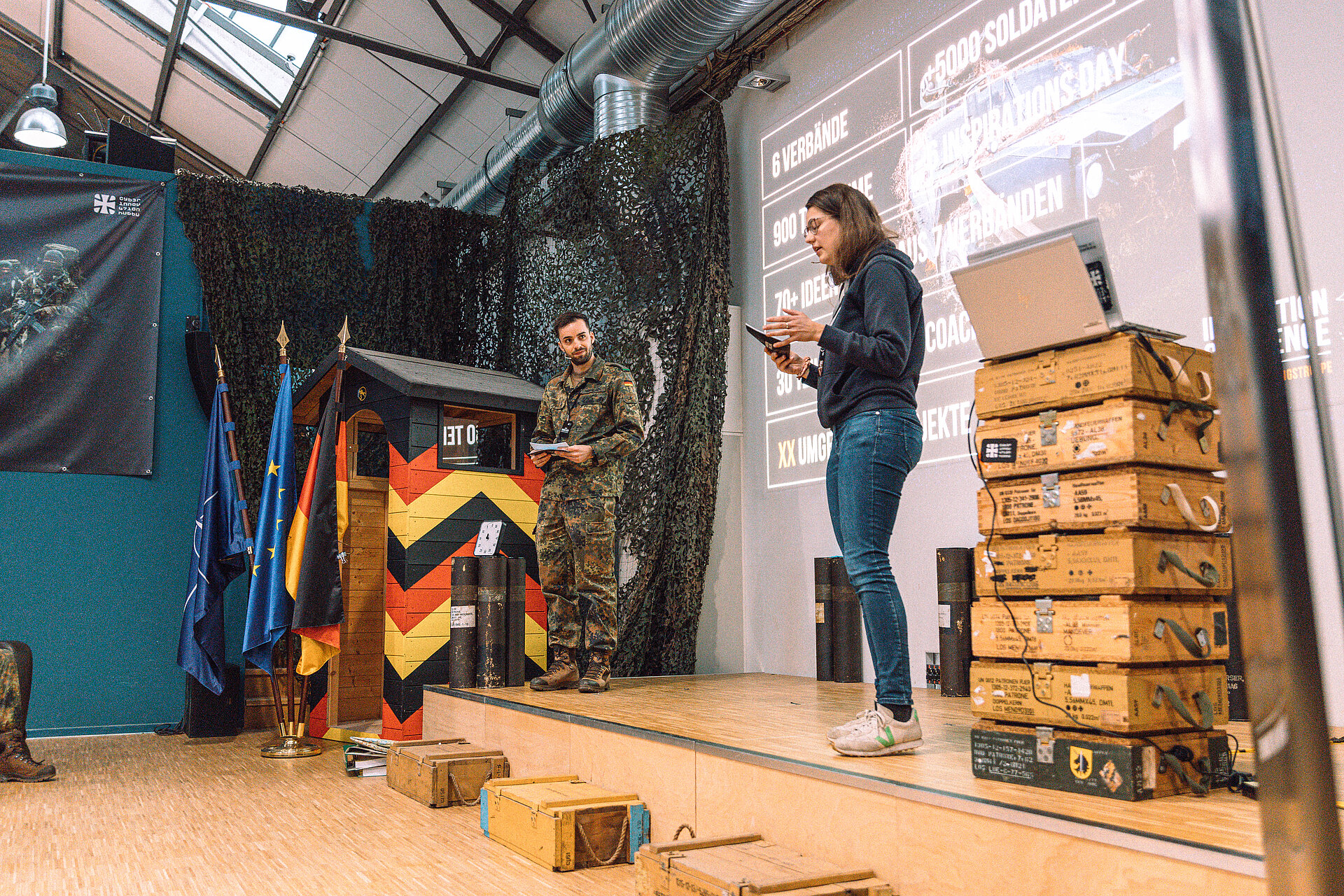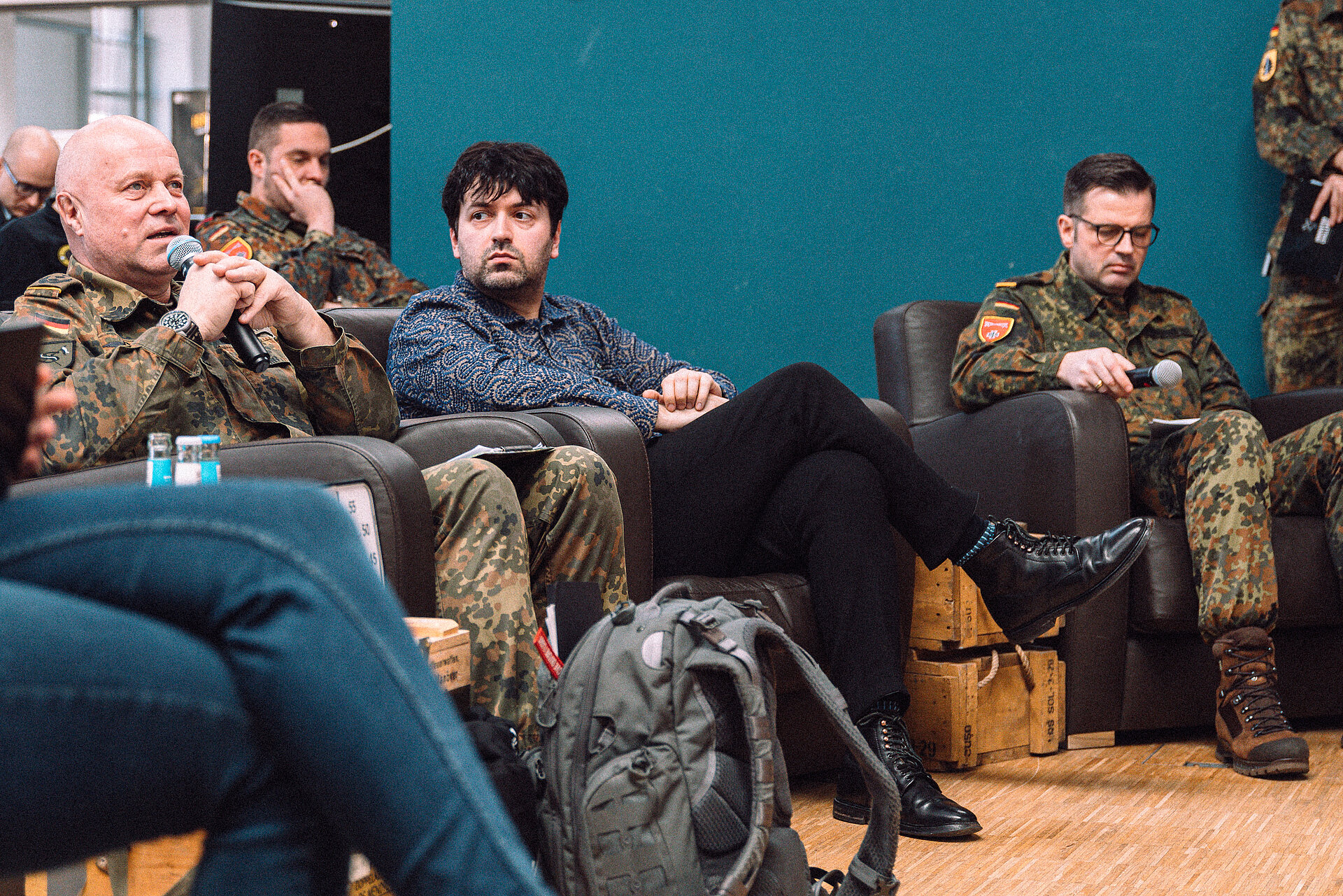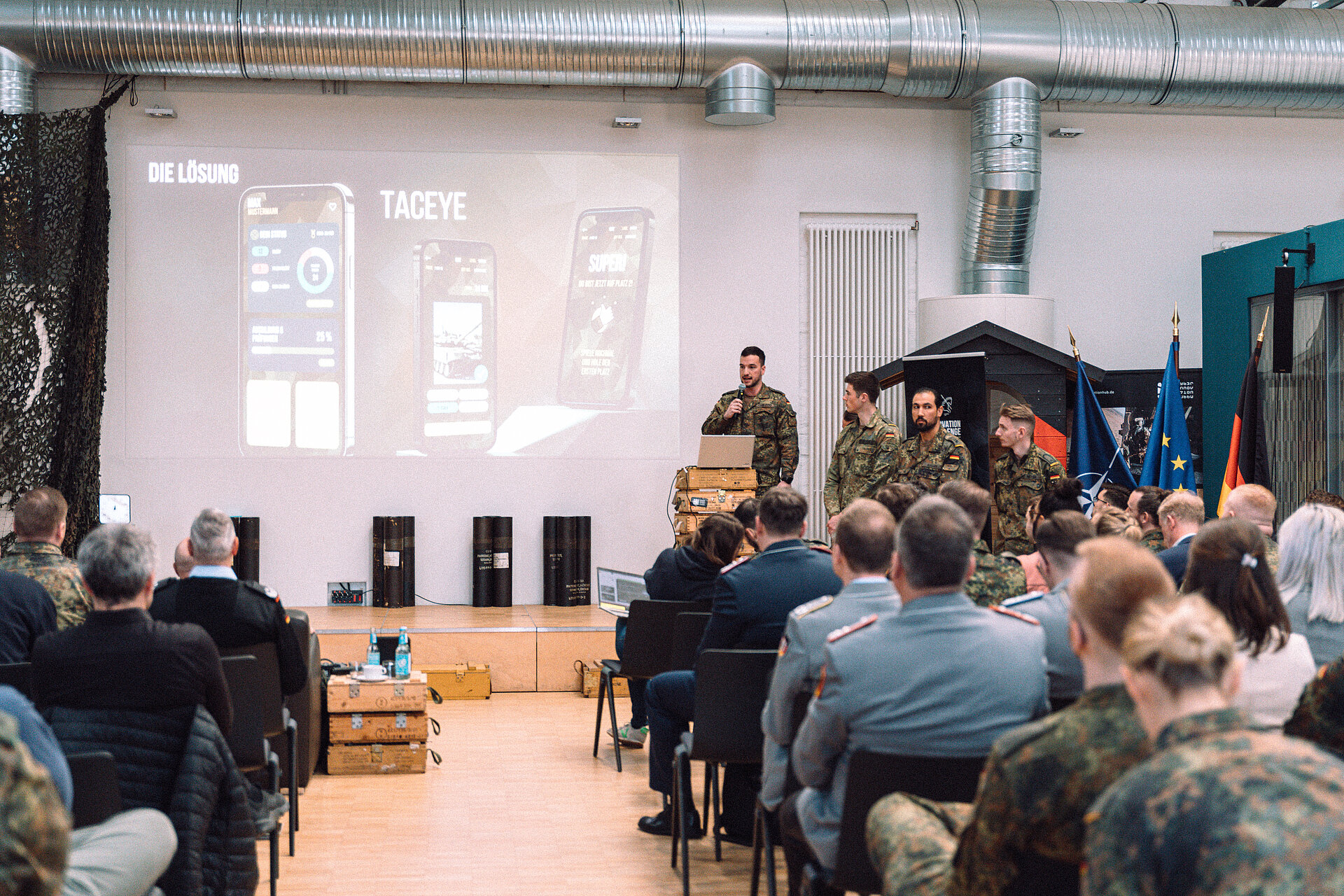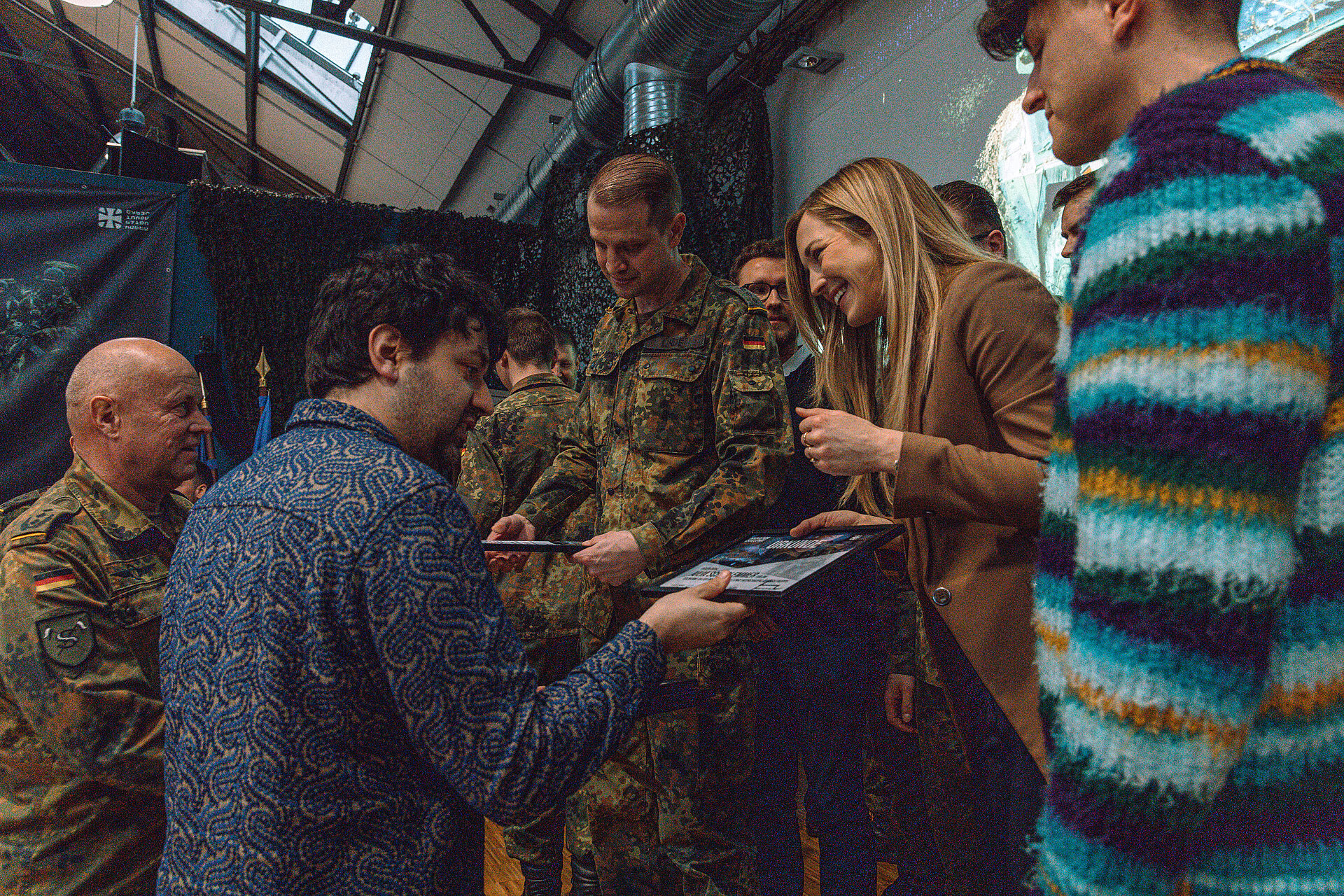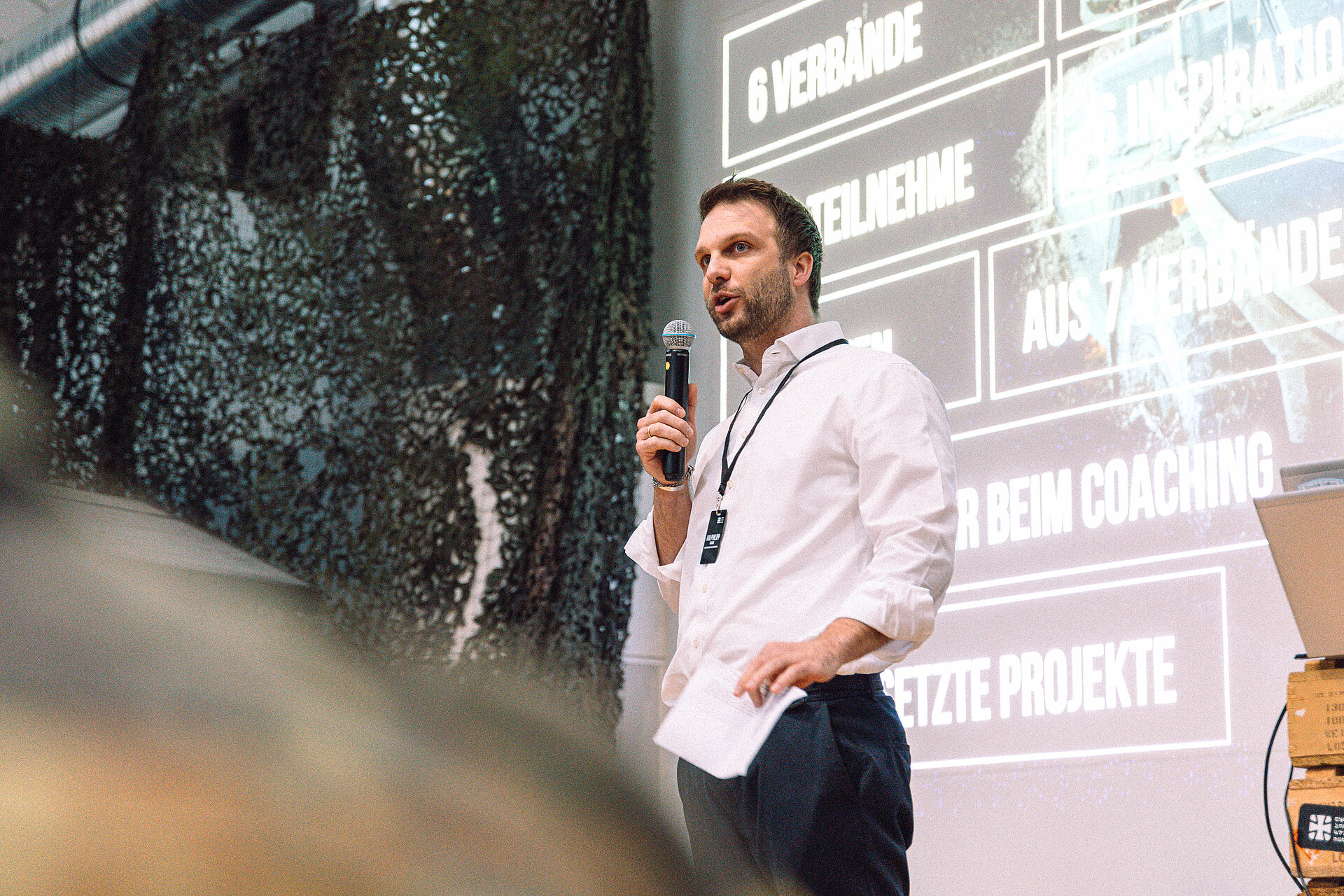Innovation Challenges are a tried and tested format of the CIHBw for finding ideas from the troops, for the troops with the troops and developing them into innovation projects. Whether it's an AI location generator, disposable sensors or an app for MED training: under the motto "Explore the Unexplored", the Bundeswehr Cyber Innovation Hub worked with the army reconnaissance units to find innovative ideas from the troops. The CIHBw received over 90 ideas. The eight best proposals were presented to a group of experts from the Bundeswehr and civilian start-up entrepreneurs at our Demo Day in Berlin at the end of February 2024. There was also the opportunity to find sponsors for your ideas.
Innovation Challenges
Recap Army Reconnaissance Challenge 2024
From a military perspective, innovation is not about technological gimmicks. It is about achieving and improving warfighting capability. This credo, coined by Colonel Ralph Malzahn, Head of the Army Reconnaissance School and General of the Army Reconnaissance Group, at the start of the event, was to be the common thread running through Demo Day. Eight teams from six Bundeswehr units presented their innovation ideas at the Army Reconnaissance Challenge in Berlin and received lasting feedback from a team of experts after each pitch.
"With the Innovation Challenge format, we want to find intrapreneurs who will work with us to drive forward their ideas for a more innovative team in the form of an innovation project," says Jan Philipp Krahn, Product Manager Intrapreneurship.
The eight projects in poster format
Zur Download-Datei (German)
"There are numerous successful examples, ranging from the Tesla Tender, which a frigate captain developed with us, to the use of augmented reality for more efficient training of vehicle drivers in logistics." The first pitches have already shown that current conflicts such as the war in Ukraine are significantly increasing the innovative strength of Bundeswehr intrapreneurs. In particular, dual-use small drones, which are used on the front lines in eastern Ukraine to reconnoitre and combat the enemy, have become a game changer. The "Drone Guard Com" project picks up on this development by making commercially available drones usable for military purposes. The aim of the project is to validate dual-use drones for reconnaissance and training use cases without the possibility of data being tapped via smartphone and transmitted to third parties when the drone is controlled.
Real-time location of wounded soldiers
Another project aims to locate soldiers in an emergency situation. "Heroguard can be the lifesaver that makes the difference between life and death," explains the team at the pitch. The emergency GPS system is designed to ensure the monitoring of soldiers in the field. If a soldier is separated from the troops and/or has an accident, all it takes is a press of the SOS button on the small device and the command post receives an electronic message with precise location data. "The need is there and it convinces me," explained Colonel Malzahn after the pitch.
Another team dealt with AI-supported terrain evaluation. The "R.A.I." system evaluates the operational terrain and corresponding geofactors in real time, enabling personnel and time resources to be used more efficiently. In the case of national and alliance defense, free capacities can be better distributed accordingly in order to process follow-up orders for soldiers in the field more quickly. In the battle of connected weapons, individual sections can therefore coordinate better and react more quickly to changes in the situation. According to the intrapreneurs, products available on the market are currently not suitable for war, which is why they gladly accepted the challenge of building their own prototype. Sven Weizenegger, Head of the Cyber Innovation Hub, recommended that the team continue as quickly as possible "to get ahead of the wave". It is also important to exploit synergy effects, such as together with the Bundeswehr's Center for Geoinformation Systems.
Artificial intelligence as a military tool
Anyone who organizes exercises knows the organizational effort involved. The process is time-consuming, requires a lot of paper and maps - and writing orders often ties up soldiers for weeks. With "PLAS", an AI that can issue a realistic exercise situation and corresponding orders in the shortest possible time was presented at the Army Reconnaissance Challenge Demo Day. With a drag and drop map solution, training situations can be created quickly on the screen. The AI generates the draft command from the geo-coordinates and the text modules. According to the Bundeswehr intrapreneurs, exercise planners would have more time to improve the quality of the content in order to increase the Bundeswehr's suitability for war.
TOMAST, an AI-supported scenario generator for training exercises, aims to do almost the same. The Bundeswehr intrapreneurs are focusing on the creation of military role-players. The AI independently creates role profiles for the exercise participants and can also react very quickly to changes in the situation. This could save a four-digit number of man-hours per year for the army reconnaissance units. "You're opening doors for me here," said Colonel Malzahn after the pitch. The experts were particularly impressed by the scalability to other branches of the armed forces.
Less paperwork for military training
Learning apps are not only an important educational tool for driving tests. They are also becoming increasingly important in military training in order to convey proven learning content in a modern and contemporary framework. Some instructors from the Army Reconnaissance School have therefore joined forces to develop the "TACEYE" app. The added value not only convinced the group of experts on Demo Day: "TACEYE" saves a huge amount of resources and time, increases learning motivation through gamification and gives instructors the opportunity to keep an eye on the learning success of course participants. "Learning the specifications and differences of combat vehicles interactively has never been so easy," said expert Colonel Marc Dingler after the presentation.
The intrapreneur team around "Veritas" presented a new type of AI-supported sensor data analysis. Data collection is supported by what is known as a mesh network. The "Hornet" system, which is sunk into the ground by soldiers or drones, is an all-in-one solution with integrated image, motion and acoustic sensors. The square sensor platform enables 360-degree monitoring of a specific section of the room. Thanks to the modular design, additional sensors can be integrated.
"We have seen a wide range of ideas today. Above all, we have developed an empathy for the problems faced by the troops," said CIHBw Director Sven Weizenegger after the Demo Day. "Demo Day is a bridge builder between the civilian world, business, science and start-ups. We need to find new ways of thinking and acting so that we can find the right answers to the questions of the future in the context of national and alliance defense."

